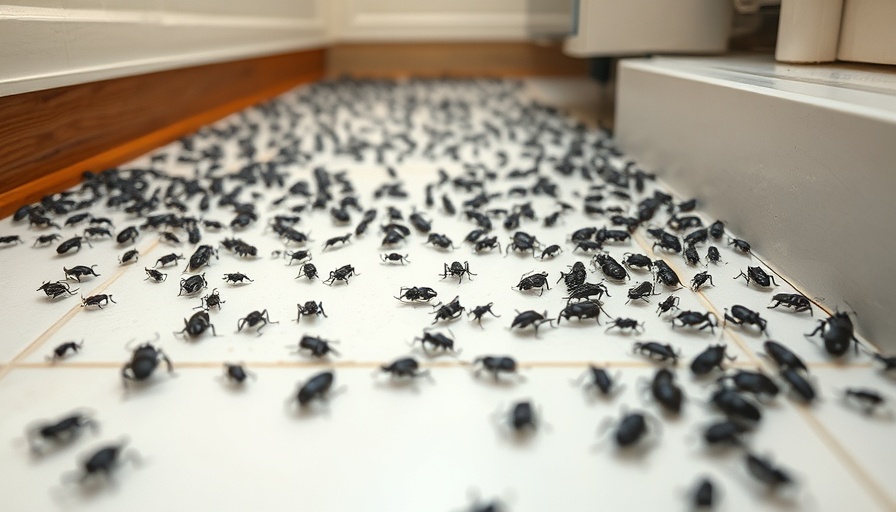
Unmasking the Tiny Black Invaders in Your Kitchen
Every homeowner knows the dismay of finding tiny black bugs in their kitchen. Whether it’s an unsightly bug crawling across your countertops or an unnoticed swarm in the pantry, identifying and addressing these pests is crucial for maintaining a safe and hygienic home.
Common Culprits and Their Identification
Black bugs in the kitchen typically belong to one of several categories. Common species include ants, particularly sugar ants, carpet beetles, and drain flies. Each species has its unique characteristics that make identification easier. For instance, sugar ants are small and shiny, often foraging for food, while carpet beetles have a more oval shape with a fuzzy appearance.
Effective Remedies for Eliminating Kitchen Bugs
Once you've identified these pests, taking action is vital. For ants, creating a barrier with diatomaceous earth, or employing a simple sugar-water trap can work wonders. Carpet beetles demand a deeper clean—vacuum thoroughly and launder fabrics to rid them of larvae. Drain flies may require cleaning your drains with a vinegar solution to eliminate their breeding ground.
Keeping Your Kitchen Bug-Free
Prevention is the best strategy. Regular cleaning and sealing food in airtight containers can significantly reduce the chances of an infestation. Homeowners in Folsom and El Dorado Hills can also benefit from easy DIY pest prevention tips tailored to our unique climates.
Proactive Steps for Long-Term Solutions
Beyond immediate fixes, consider simple upgrades such as installing window screens to keep pests from entering your home. Furthermore, maintaining your garden and outside space can ward off pests before they even enter. Using natural repellents or traps is also a wise way to keep these black bugs at bay without resorting to harmful chemicals.
Conclusion: Take Action to Protect Your Home
Little black bugs don’t have to take over your kitchen. By identifying the pests, implementing effective removal strategies, and enhancing preventative measures, you can keep your kitchen clean and bug-free. Remember, a little diligence goes a long way when it comes to home maintenance!
 Add Row
Add Row  Add
Add 




Write A Comment